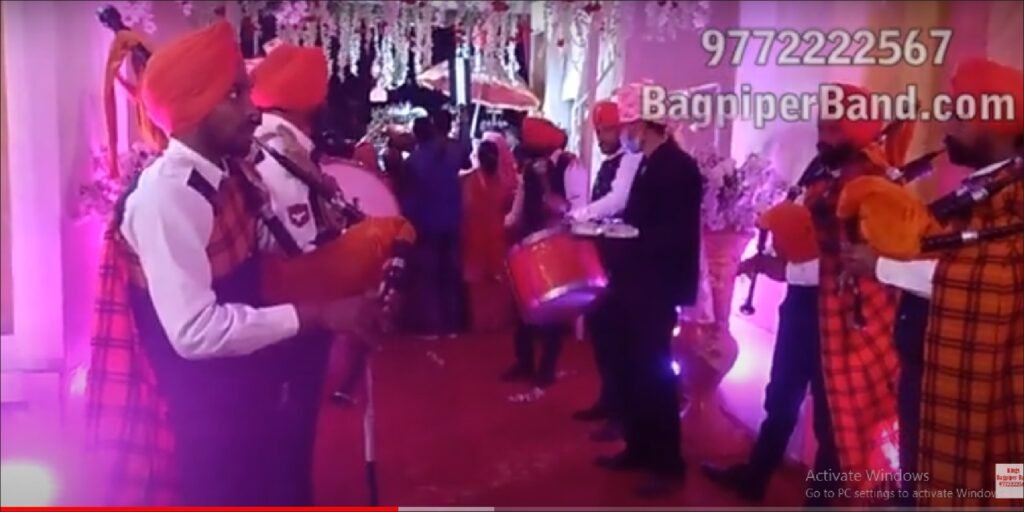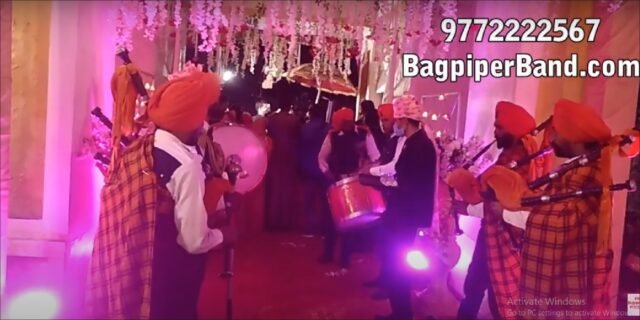Devi Kali Agaman Visarjan Kali Puja Festival Kolkata with Bagpiper Band Performance
The Heartbeat of Kolkata’s Kali Puja
Imagine a city pulsating with devotion, lit up by thousands of oil lamps, and echoing with the rhythmic beats of drums and the soulful melodies of bagpiper bands. That’s Kolkata during Kali Puja, a festival that transforms the City of Joy into a vibrant tapestry of spirituality, culture, and community.

Dedicated to Goddess Kali, the fierce yet compassionate deity, this festival is a celebration of good triumphing over evil, wrapped in rituals like Agaman (the divine arrival) and Visarjan (the emotional farewell). And what makes it uniquely Kolkata? The stirring performances of bagpiper bands that add a distinctive flair to the festivities. Let’s dive into this colorful journey, exploring the essence of Kali Puja, its rituals, and the unforgettable role of bagpiper bands.
The Essence of Kali Puja
Kali Puja is more than just a festival; it’s a spiritual awakening that resonates deeply with Bengalis. Celebrated on the new moon night of the Hindu month of Kartik (usually October or November), it coincides with Diwali but swaps Lakshmi for Kali in West Bengal, Odisha, and Assam.
Why Kali? She’s the fierce incarnation of Durga, a symbol of raw power, protection, and the destruction of evil. Her image—dark complexion, garland of skulls, and a sword in hand—might seem intimidating, but to devotees, she’s a mother who shields them from harm.
Historical Roots of Kali Puja
The origins of Kali Puja trace back to the 16th century when sage Krishnananda Agamavagisha dreamt of the goddess instructing him to worship her in this form.
But it was in the 19th century, with the rise of Shri Ramakrishna, a legendary Kali devotee, that the festival gained widespread popularity. His devotion, coupled with the patronage of affluent landowners, turned Kali Puja into a grand celebration. By the 18th century, patrons like King Krishnachandra of Nadia made it a cultural cornerstone in Bengal, blending spirituality with artistic expression.
Spiritual Significance
Why does Kali Puja strike such a chord? It’s a reminder of life’s fragility and the power of divine feminine energy. Kali, standing triumphantly over Shiva, represents the victory of truth over ego and evil. Celebrated on the darkest night of the year, the festival symbolizes light piercing through darkness.
Devotees seek her blessings to banish fears, overcome obstacles, and find inner peace. It’s like a spiritual reset button, clearing negativity and paving the way for prosperity.
Devi Kali Agaman: The Divine Arrival
The festival kicks off with Agaman, the symbolic arrival of Goddess Kali to her earthly abode. Think of it as welcoming a beloved guest into your home—only this guest is a divine force! Agaman sets the stage for the festivities, filling Kolkata with anticipation and fervor.
What is Agaman?
Agaman, meaning “arrival” in Bengali, marks the moment when Kali is believed to descend from her celestial home. Communities prepare by crafting intricate clay idols of the goddess, often adorned with red hibiscus garlands and vibrant attire.
Devi Kali Agaman Visarjan Kali Puja Festival Kolkata with Bagpiper Band Performance
Artisans spend months perfecting these idols, infusing them with life through rituals like Chokkhudaan, where the eyes of the deity are painted to signify her awakening. It’s a moment that sends shivers down your spine—imagine the goddess herself gazing at her devotees!
Community Preparations
Kolkata comes alive with pandals—temporary shrines that are works of art in themselves. From Girish Park’s dazzling designs to Shibpur’s thematic setups, these pandals are cultural hubs.
Communities pool resources, artists showcase their creativity, and the streets buzz with excitement. It’s like a city-wide art gallery where every corner tells a story of devotion and craftsmanship.
The Heart of Kali Puja Celebrations
Once Agaman sets the tone, the festival unfolds with rituals, prayers, and celebrations that last through the night. Kolkata’s temples and pandals become the epicenter of devotion, drawing lakhs of devotees and curious visitors alike.
Iconic Temples and Pandals
Kolkata’s Kalighat Temple, one of the 51 Shakti Peethas, is a must-visit. Here, Kali is worshipped as Lakshmi on this day, with thousands offering flowers, sweets, and prayers. Dakshineshwar Temple, where Ramakrishna performed sacred rites, is another spiritual hotspot.
For pandal-hoppers, Girish Park’s magnificent setups and Shoshan Kali’s unique black idol at Keoratala cremation ground offer unforgettable experiences. Ever wondered what it’s like to stand in a sea of devotees, surrounded by glowing lamps and towering idols? That’s Kolkata during Kali Puja.
Rituals and Offerings
Kali Puja is a blend of Brahminical and Tantric traditions. In the Brahminical style, devotees offer 108 hibiscus flowers, bilva leaves, and clay lamps, keeping it vegetarian and serene.
The Tantric approach, however, is more intense, involving midnight mantras and, in some places, animal sacrifices to appease the goddess. Offerings like rice, lentils, fruits, and sweets are common, with Bhoger Khichuri—a spicy mix of rice and lentils—being a staple prasad. It’s like a divine feast that binds devotees in shared reverence.
Nightlong Devotion
The real magic happens at midnight. Temples and pandals echo with aarti, chants, and the rhythmic beats of dhak drums. Devotees meditate through the night, seeking a deeper connection with Kali.
The air is thick with incense, the glow of lamps, and the collective energy of thousands praying as one. It’s a spiritual marathon, and the finish line is a sense of divine closeness that’s hard to describe.
Visarjan: The Farewell to Devi Kali
As the festival draws to a close, Visarjan—the immersion of Kali’s idols—brings an emotional crescendo. It’s like saying goodbye to a loved one, knowing they’ll return next year.
The Emotional Send-Off
Visarjan is the grand finale, where idols are carried in vibrant processions to the Ganges for immersion. Devotees dance, sing, and chant “Jai Kali, Kalkattawali” as they bid farewell. The act symbolizes Kali’s return to her divine abode, but it’s bittersweet—imagine parting with a mother who’s just visited your home. The Ganges sparkles with reflections of lamps and fireworks, creating a scene straight out of a dream.
Community Bonding During Visarjan
Visarjan isn’t just a ritual; it’s a celebration of togetherness. Families, friends, and strangers join the processions, united by faith and festivity. The streets of Kolkata turn into a carnival, with food stalls, music, and laughter. It’s a reminder that Kali Puja isn’t just about spirituality—it’s about community, love, and shared joy.
The Role of Bagpiper Bands in Kali Puja
Now, let’s talk about the unsung heroes of Kali Puja: the bagpiper bands. These bands, playing the ‘tota’—a high-pitched, shehnai-like instrument—add a unique rhythm to the festival, especially during Visarjan.
A Unique Kolkata Tradition
Bagpiper bands have been a part of Kolkata’s festival scene for decades, particularly during Durga Puja and Kali Puja. The ‘tota,’ made of seasoned wood with a brass bell, is a star in these performances. Bands like Akota and Kalighat Balaka play everything from Bollywood hits to Bengali classics like “Sohag Chand Badani Dhani.” It’s like a musical bridge between tradition and modernity, making every procession a party.
Bagpiper Performances During Visarjan
During Visarjan, bagpiper bands lead the charge, their melodies cutting through the chaos of drums and chants. Picture this: a procession winding through Kolkata’s streets, with the ‘tota’ belting out a peppy tune, and devotees dancing in its wake.
These performances aren’t just background music—they’re the heartbeat of the immersion, lifting spirits and adding grandeur. Bands often get bookings months in advance, a testament to their popularity.
Challenges and Revival of Bagpiper Bands
Sadly, traditional bagpiper bands face stiff competition from modern brass bands. The high cost of a quality ‘tota’ (up to Rs 50,000) and a shortage of skilled players add to the challenge. Yet, passionate musicians like Mili Dolui, Kolkata’s only female ‘tota’ player, are keeping the tradition alive. Their efforts ensure that the soulful strains of the bagpiper remain a cherished part of Kali Puja.
Cultural and Social Impact of Kali Puja
Kali Puja isn’t just a religious event; it’s a cultural phenomenon that shapes Kolkata’s identity. From pandal tourism to devotional music, it’s a festival that transcends boundaries.
A Festival Beyond Religion
What makes Kali Puja special? It’s inclusive. People from all backgrounds—Hindu, Muslim, or otherwise—join the celebrations, visiting pandals and savoring the festive vibe. The festival also boosts Kolkata’s economy, with pandals attracting tourists and creating jobs for artisans, vendors, and performers. It’s like a cultural magnet, drawing everyone into its orbit.
Shyama Sangeet and Cultural Performances
No Kali Puja is complete without Shyama Sangeet, the devotional music dedicated to Kali. Singers like Pannalal Bhattacharya have immortalized this genre with soul-stirring melodies. Cultural performances, from dance to theater, add to the festive spirit, making pandals not just places of worship but stages for art. It’s like a cultural buffet, with something for everyone.
Planning Your Visit to Kali Puja in Kolkata
Ready to experience Kali Puja firsthand? Here’s how to make the most of it.
Best Time to Visit
Kali Puja typically falls in late October or early November, aligning with Diwali. In 2025, expect it around October 20. The weather is pleasant, with cool evenings perfect for pandal-hopping. The festival’s peak is the new moon night, so plan your visit to catch the midnight aarti and Visarjan processions.
Must-Visit Pandals and Temples
Start with Kalighat and Dakshineshwar temples for a spiritual dive. For pandals, Girish Park, Shibpur Bijayee Sangha, and Barasat’s elaborate setups are crowd favorites. Want to hear the bagpiper bands? Join the Visarjan processions near the Ganges, where their melodies shine. Bring comfortable shoes, an open heart, and a camera—you’ll want to capture every moment.
Conclusion
Kali Puja in Kolkata is a whirlwind of faith, art, and celebration. From the divine arrival of Devi Kali during Agaman to the tearful farewell of Visarjan, the festival weaves spirituality and community into a vibrant tapestry. The bagpiper bands, with their soulful ‘tota’ melodies, add a unique Kolkata twist, making every procession unforgettable.
Whether you’re drawn by the devotion, the culture, or the sheer energy of the City of Joy, Kali Puja is an experience that stays with you long after the lamps fade. So, why not plan a trip to Kolkata and let Maa Kali’s fierce grace light up your soul?
Devi Kali Agaman Visarjan Kali Puja Festival Kolkata with Bagpiper Band Performance
FAQs
- What is the significance of Agaman in Kali Puja?
Agaman refers to the symbolic arrival of Goddess Kali, marked by rituals like Chokkhudaan, where artisans paint the idol’s eyes to bring her to life. It’s a moment of spiritual awakening, signaling the start of the festival. - Why are bagpiper bands unique to Kolkata’s Kali Puja?
Bagpiper bands, playing the ‘tota’ instrument, are a traditional feature of Kolkata’s festivals, adding a festive and nostalgic vibe to Visarjan processions. Their blend of Bollywood and Bengali tunes makes them a crowd favorite. - Which pandals should I visit during Kali Puja in Kolkata?
Girish Park, Shibpur Bijayee Sangha, and Shoshan Kali at Keoratala are must-visits for their stunning designs and vibrant atmosphere. Each offers a unique take on Kali’s idol and cultural themes. - How does Visarjan differ from other festival rituals?
Visarjan is the emotional immersion of Kali’s idols in the Ganges, symbolizing her return to the divine realm. Unlike other rituals focused on worship, Visarjan is a communal farewell filled with music, dance, and processions. - Can non-Hindus participate in Kali Puja celebrations?
Absolutely! Kali Puja is inclusive, welcoming people of all backgrounds to visit pandals, enjoy cultural performances, and soak in the festive spirit. It’s a celebration of community as much as faith.
TAg: Devi Kali Agaman Visarjan Kali Puja Festival Kolkata with Bagpiper Band Performance
Tag: Devi Kali Agaman Visarjan Kali Puja Festival Kolkata with Bagpiper Band Performance




